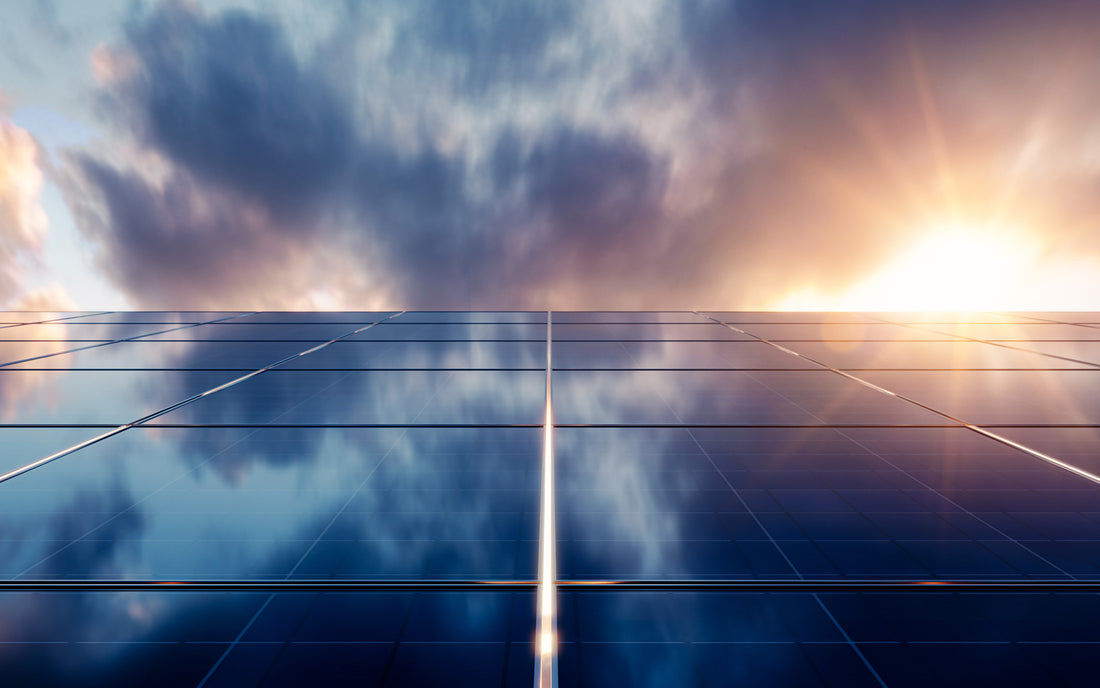Increasingly Efficient Solar Panels

In the face of climate change, the demand for renewable energy solutions like solar panels is skyrocketing. Thanks to some nifty tech upgrades, manufacturers are cranking up the efficiency of these panels. As the solar industry grows, focusing on high-efficiency solar panels brings a bunch of perks, like squeezing out more power while being kinder to the planet. In this blog, we're delving deeper than mere hardware, into the world of increasingly efficient solar panels and why installers should be all about that efficiency when picking their solar tech.
What's Solar Panel Efficiency All About?
Simply put, solar panel efficiency tells us how well panels can turn sunlight into usable electricity. So, if a panel has 20% efficiency, it means it can turn 20% of the sunlight it catches into power. In 2024, the average efficiency hovers around 21%.
What Factors Mess with Panel Efficiency?
Keep in mind that a few things can mess with how efficient solar panels are. Things like shading from trees or buildings, how you position them, how intense the sunlight is, and even dirt build-up on the panels can all affect their performance. Oh, and higher temperatures can also reduce how much power they pump out.
Why Should You Care About Solar Panel Efficiency?
Alright, so why should you care if your panels are super-efficient? Well, for starters, higher efficiency means you need fewer panels to get the same job done. By harnessing more energy from the same amount of sunlight, these panels yield lower degradation and higher output. That means more competitive quotes, and less gear to buy and install, which saves everyone money and time.
Also, compact panels that crank out the same amount of electricity are perfect for tight spaces like rooftops or small plots of land. And, showing off your expertise by offering top-notch, efficient solar panels enhances your reputation and competitiveness. It's a good look for installers, and it keeps customers happy too. Plus, as energy regulations and standards evolve, there may be requirements or incentives favouring the use of high-efficiency panels. Being ahead of the game by offering the latest and greatest tech means more perks for you and your clients.
What's the Best Kind of Solar Cell?
Okay, so what's the deal with solar cells? Well, domestic panels usually hit efficiency rates between 15% to 22%. The most efficient solar cells are monocrystalline and polycrystalline, with the former being, on average, more efficient. These panels commonly use N-type (IBC) monocrystalline silicon cells or advanced variations such as HJT and TOPcon cells.
Major manufacturers like Jinko Solar, JA Solar, Longi Solar, Canadian Solar, and Trina Solar are swiftly transitioning away from traditional P-type mono-PERC cells towards these more efficient N-type designs.
Any Cool New Stuff on the Horizon?
In November 2023, a breakthrough occurred with the introduction of perovskite tandem solar cells, achieving a world record efficiency of 33.7%! By stacking perovskite on top of silicon, this buzzy new technology utilises more of the sunlight spectrum, promising higher electricity generation. A Chinese start-up plans mass production, but real-world durability testing and scaling remain essential challenges.
And speaking of records, the German brand Tenka is unveiling a solar panel boasting an ‘unprecedented efficiency’ of 29%. The Prismax has broken the efficiency record for a panel and extends operational time by 30% compared to traditional ones. That's a significant leap forward in the world of solar!
Which Panels Should You Check Out?
Okay, so which panels should you be eyeing up? Here are a few of our recommendations:
The TENKA 450W Orion Serie III All Black N-Cell: With 23.1% efficiency, this sleek module packs a punch. Plus, providing 10% more power from the same amount of space enables cost savings in mounting, cabling, and labour of up to 15%.
The HD Hyundai 590W Solar Module: Sporting a 22.84% efficiency, this one's a powerhouse, especially for commercial setups. It features high bifaciality of up to 90%, generating approximately 2%-4% more power than bifacial PERC cells.
So, there you have it! By focusing on efficiency, installers not only save money— they enhance their competitiveness and provide superior solutions to their clients. Check out our range of high-efficiency solar panels and give us a shout if you want to know more!
Glossary
Bifaciality - the ability of solar panels to absorb sunlight and generate electricity from both the front and rear sides of the panel.
Monocrystalline - monocrystalline solar panels are made from a single crystal structure, typically silicon, and are known for their efficiency and sleek appearance.
Polycrystalline – polycrystalline panels are made from multiple silicon crystals and are generally less expensive to produce than monocrystalline panels.
N-Type (IBC) – N-Type monocrystalline silicon cells, also known as Interdigitated Black Contact (IBC) cells, are a type of high-efficiency solar cell design that minimises energy loss and improves performance.
HJT Cells – Heterojunction with Intrinsic Thin Layer (HJT) cells are another type of advanced solar cell design that combines thin layers of different semiconductor materials to enhance efficiency.
TOPcon Cells – Tunnel Oxide Passivated Contact (TOPcon) cells are another type of advanced solar cell design that utilises oxide layers to reduce energy loss and improve efficiency.
P-Type Mono-PERC cells – P-Type monocrystalline Passivated Emitter and Rear Cell (PERC) cells are a traditional solar cell design that has been widely used but is gradually being replaced by more efficient N-Type designs.
Perovskite Tandem Solar Cells - perovskite tandem solar cells are a novel type of solar cell that combines perovskites (a family of materials with a crystal structure) that have shown potential for high efficiency, low production costs, and better sunlight absorption in solar cells compared to traditional silicon cells.






